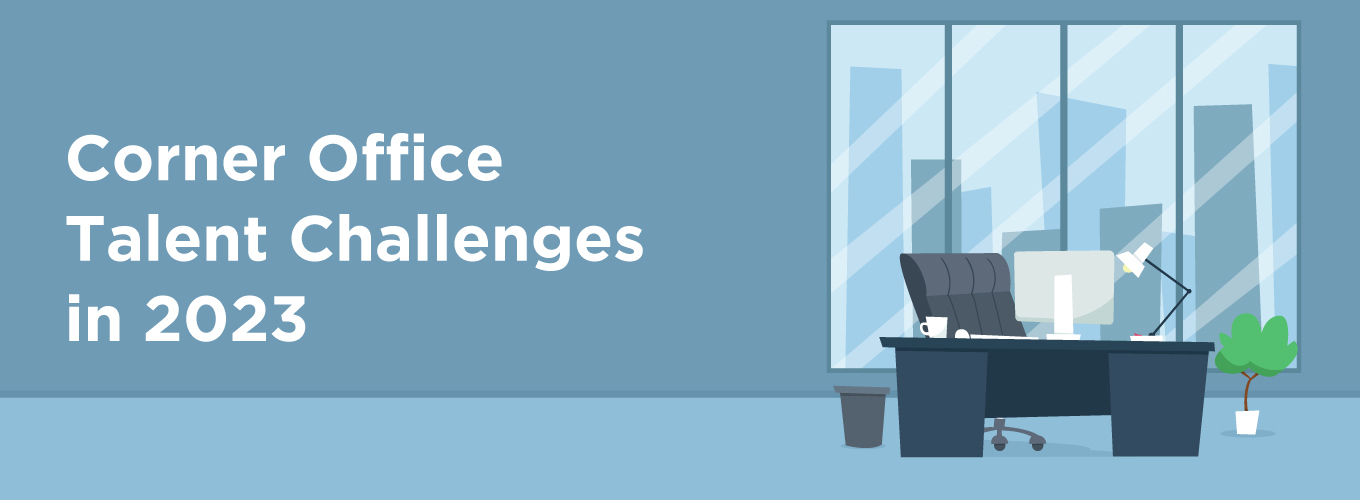Corner Office Talent Challenges in 2023
The pandemic brought in several economic challenges in 2022 and many challenges that brought irreversible changes in workplaces. The corner office is cautiously optimistic about the coming year and expanding their footprint. They are looking for tools to support the wellbeing of their people, getting teams to focus on long-term goals even as they navigate ongoing uncertainty. It is a tightrope walk between growth and being conservative.
Table of Contents
Several challenges face leaders today with regard to growth, people, profit, alignment, planning and strategy. Let us explore some of them in detail.
1. The cost of high-profile hires
Experience and expertise play a major role in leadership hiring. Failing to do thorough research at the various stages while recruiting top talent leads to costly mistakes. Companies should make informed decisions about the type of leader they need and the type of resources they will need to attract and retain top talent. You will need to understand the state of the market, salary expectations and the skills and experience that are in demand. Hiring for skills rather than for cultural fit can lead to misalignment of values and goals and therefore high turnover. Among the many things to keep in mind would be to check references, keep diversity and inclusion in mind, providing clear goals and expectations and conducting thorough interviews. Hiring based on charisma rather than substance is also a costly mistake that can lead to a poor fit for the role. Hiring leaders who are not open to learning and growth can limit the company’s potential for future success. Do not focus on filling a position quickly, instead find the right fit for the long term and avoid costly mistakes and high turnover.
2. Right-sizing the workforce
Several workplaces have no choice but to lay off workers due to the tough environment. While letting go of people is difficult and sometimes choiceless, you can control how you let people go. Ensure that employees feel that you will cut jobs only as a last resort. Some of the things to focus on that will ensure this is to:
- Show care: Demonstrate genuine concern for your employees and the challenges that they may be facing. These challenges could be personal or professional but showing that you care can make a huge difference.
- Be fair: Avoid politicking and ensure that any restructuring includes perspectives from multiple people and that you are mindful of the various issues.
- Involve people: Ensure that you involve the people in the decisions that will affect their jobs and enable them to have a say.
Some of the ways to counter the tough decisions of having to consider layoffs is to see if you can offer employees a voluntary short-term sabbatical, take a pay-cut, offer early retirement or cut work hours. Layoffs are difficult and it is important how you are communicating about it. Hold meetings with your remaining employees and share facts about the layoffs. Allow for questions and clarify changes in duties. Be transparent and show employees that you care.
3. Balancing costs and compensation
While recruiting employees, there are many reasons why there are inequities in pay. Many times, there is a challenge of balancing compensation for employees in the same role. Some employees are paid more than the others. There are many legitimate business reasons why employees are compensated differently. Factors such as tenure, education and experience are some of the reasons why employers pay employees differently. The best way for leaders and boards to ensure that they are paying employees fairly is to have a pay equity audit.
4. Return to the office
The Covid-19 pandemic forced organizations to embrace change and use advanced tools for collaboration and communication. Nobody anticipated the speed and scale at which the pandemic would revolutionize workplaces. The balance of power has shifted after the pandemic from employers to employees. The employee value proposition has shifted from “work for me” to “work with me”. Employees are preferring to work in the hybrid model rather than go back to office full time. Employees are now searching for meaning and not activity. Employees are demanding purposeful work and hence it is important to share your organization’s purpose and values which will help retain more employees. Move from a customer-first approach to a people-first approach and treat your employees with the same passion and respect that you would treat a customer.
5. Beyond hybrid
The new work environment favors lean and productive organizations. It is forcing employees to think differently about their talent management strategies. Flexibility of work is one of the best tools that you can use to attract, retain talent and close the skills gap. Companies are beginning to grant employees autonomy to control when, where and how they want to get the work done. Whether it is telecommuting, compressed worksheets, alternative scheduling or other arrangements, change is the name of the game.
Organizations must work dynamically and proactively to create a work environment that assures the employees that their employers care for their wellbeing and thus feel motivated and keep productivity at the desired levels.









